Microsoft Azure | Get Started with Azure Site Recovery
Get Started with Azure Site Recovery | In today’s digital era, businesses rely heavily on their IT infrastructure to store, process, and manage critical data. Therefore, it is essential for organizations to have a robust disaster recovery plan in place to ensure business continuity in the event of any unforeseen circumstances. Microsoft Azure offers a powerful solution called Azure Site Recovery (ASR) that enables businesses to replicate and recover their on-premises virtual machines (VMs) and physical servers to Azure. In this blog post, we will explore the features and benefits of Azure Site Recovery and guide you on how to get started.
Azure Site Recovery Overview
Azure Site Recovery provides six primaries to be used as a backup service and Disaster Recovery as a Service (DRaaS).
• Automated Data Protection (DP) and replication of virtual machines and physical servers
• Customizable Disaster Recovery plans
• Automated failover and recovery
• Production non-disruptive recovery and failover testing
• Health monitoring of the Disaster Recovery Site (ASR)
• Multiple operating systems and third-party software support (VEEAM, ZERTO)
Business: On-premises vs Azure Cloud
Azure Site Recovery business continuity and disaster recovery strategy
Azure Site Recovery offers two primary BCDR strategies;
1. Azure Site Recovery Services
Azure Site Recovery enables business continuity by taking over the task of running the business applications and workloads that happen during outages.
2. Azure Backup Service
Azure Backup Service keeps the data backed up safely in Azure to be recovered when needed.
Key Features of Azure Site Recovery:
Replication:
Azure Site Recovery replicates virtual machines, physical servers, and even entire data centers to Azure. It ensures that your data is securely copied and stored in the Azure cloud, ready for failover when needed.
Orchestration and Automation:
Azure Site Recovery (ASR) provides a centralized management console that allows you to orchestrate and automate the failover and failback processes. You can define recovery plans, set up multi-tier application dependencies, and automate the entire recovery workflow.
Application Consistency:
Azure Site Recovery (ASR) ensures application-consistent replication by coordinating with the operating system and applications running on the protected machines. This ensures that when a failover occurs, the replicated machines are in a consistent state and can be brought online without any data corruption.
Recovery Point Objectives (RPOs):
Azure Site Recovery offers flexible RPO options to meet your business requirements. You can choose between near-synchronous, asynchronous, or scheduled replication based on the criticality of your workloads.
Recovery Time Objectives (RTOs):
ASR enables you to achieve low RTOs by providing rapid and automated recovery options. In case of a disaster, you can initiate a failover with a few clicks and quickly bring your applications online in Azure.
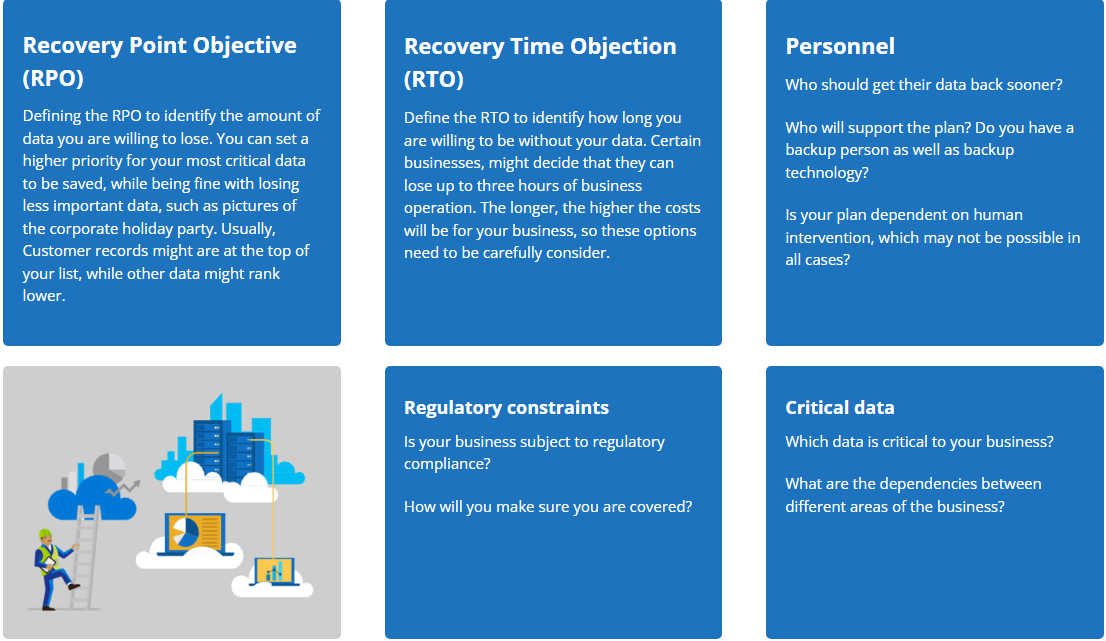
Azure Site Recovery variants
Azure Site Recovery enables organizations with a different infrastructure to make use of ASR. It’s offered in three variants:
• Azure to Azure
• On-premises to Azure
• On-premises to On-premises
Azure to Azure
Microsoft Azure offers an option to replicate virtual machines from one geographical region to another. For example, Virtual machines hosted in the Canada East Azure Data center can be replicated to the Canada Central or the South Central US.
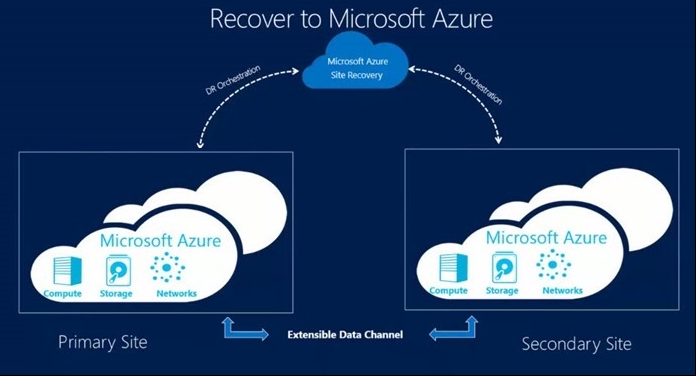
On-premises to Azure
ASR also lets you replicate on-premises virtual machines and physical servers to Azure. Changes made in these machines are replicated instantly to the Azure storage account. If for any instant, the business faces a service downtime, an Azure VM can be created within Azure and resume work with minimal service downtime. This is very convenient for businesses since they only pay for the storage used.
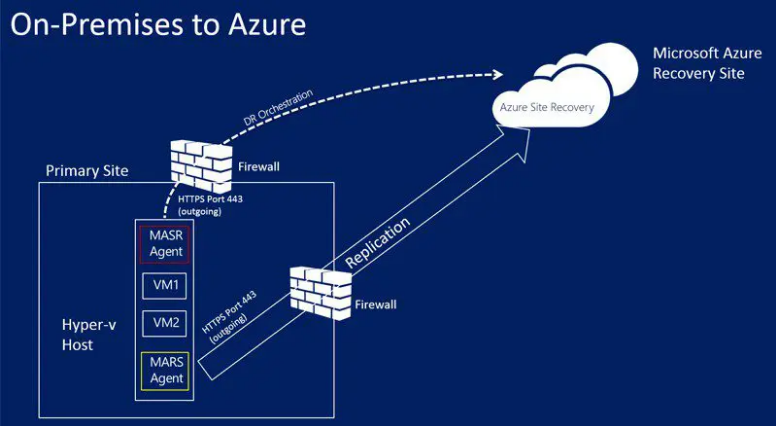
On-premises to on-premises
In this scenario, site recovery is solely responsible for managing the migration of the data among the primary and the secondary site and only acts as a communication channel between them.
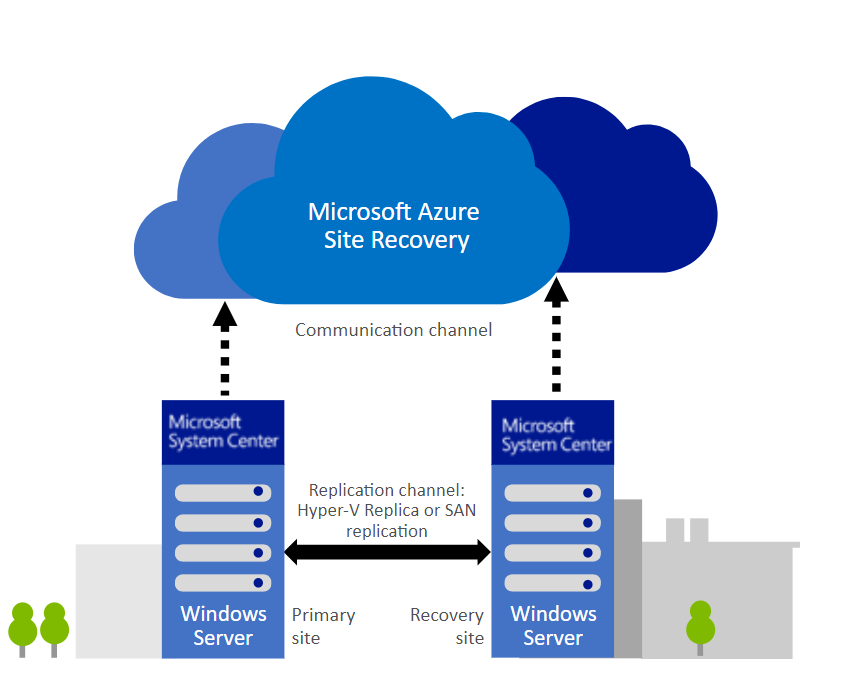
Why Azure Site Recovery
Other traditional disaster recovery models are expensive and time-consuming to implement, but the disaster recovery solution of Microsoft Azure Site Recovery makes it possible for businesses to unlock a variety of features that were not possible for organizations to attain at an enterprise level.
Reduced costs
The usage of Azure Site Recovery eliminates the need to maintain a secondary datacenter of a hot site, warm site, cold site, or acquiring additional physical infrastructure to be used in anticipation of a service downtime which comes with a high initial, operational, and maintaining cost. With Azure Site Recovery, there is only the need to pay for the storage used. Other operational costs of computing are applied only if there is a service outage.
Convenient replication and testing
Azure Site Recovery offers innovative disaster recovery drills that allow you to easily test the configuration and replication without affecting the production environment. This process enables businesses to test the setup quickly and have the added confidence that the failover process will work seamlessly.
Additional Azure features like runbooks can be used to automate the failover process. This automation makes the failover process instant without human intervention, so the process is fast resulting in minimum service downtimes.
Simple deployment and management
Azure Site Recovery can be easily initiated without any additional expertise. ASR is also automatically updated with new Azure features as soon as they are released. The provisioning order of the virtual machines in a failover instance when applications are running in a sequence of separate virtual machines can be pre-configured to eliminate application connectivity issues. Compliance can also be tested without impacting the live production environment or its users by running test failover scenarios.
99.9% SLA
Organizations can rely on Azure Site Recovery which ensures minimum downtime and recovery that is dependable. ASR promises 99.9% service availability and 24×7 instant support so business processes can run smoothly. As a result, the Azure Site Recovery platform is used by 80% of the Fortune 500 companies.
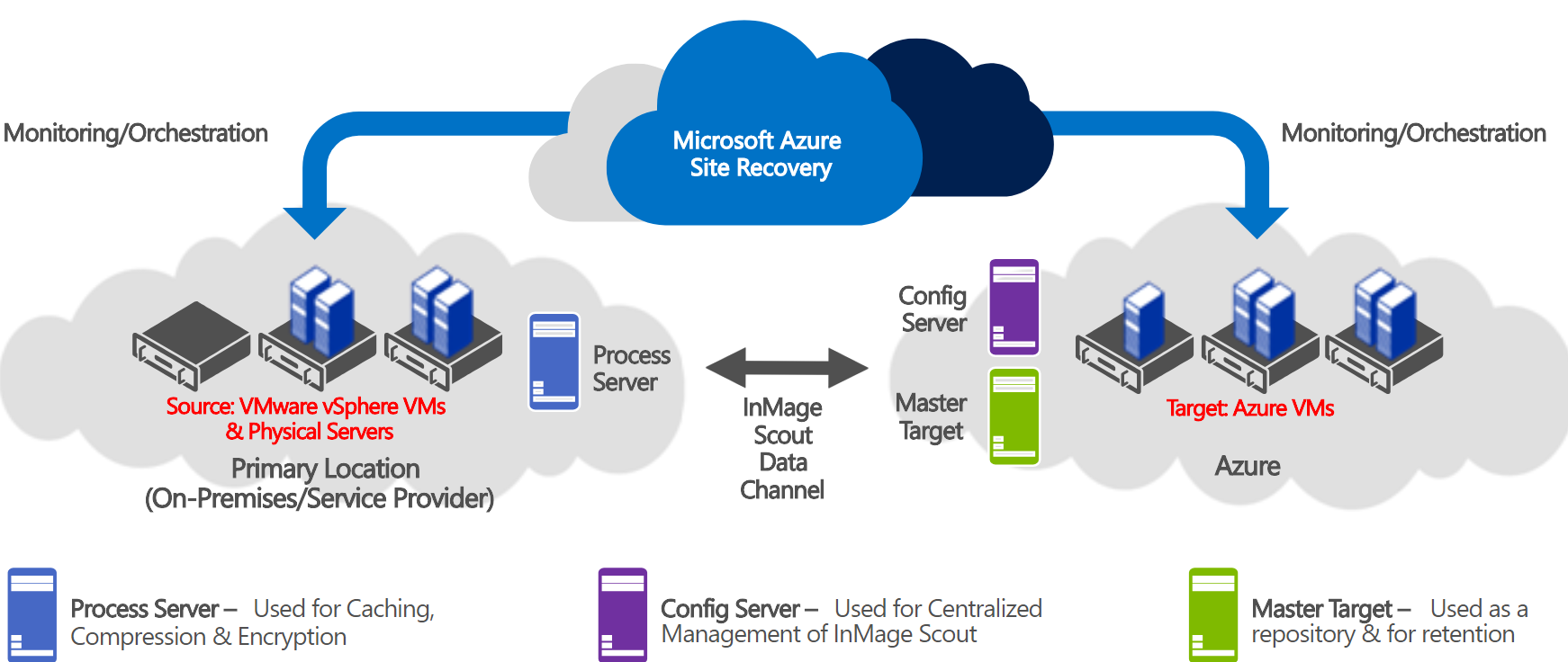
Getting Started with Azure Site Recovery:
1. Azure Subscription:
To begin using Azure Site Recovery, you need an Azure subscription. If you don’t have one, you can sign up for a free trial or a pay-as-you-go subscription at azure.microsoft.com.
2. Set up Azure Site Recovery Vault:
Once you have an Azure subscription, you need to create an Azure Site Recovery vault. The vault acts as a management and orchestration point for your disaster recovery operations. You can create the vault through the Azure portal or using Azure PowerShell.
3. Configure Replication:
After setting up the Site Recovery vault, you need to configure replication for your on-premises VMs or physical servers. This involves installing the Azure Site Recovery Provider on your on-premises machines and connecting them to the vault.
4. Create a Recovery Plan:
A recovery plan defines the failover and failback steps for your applications. You can create a recovery plan in the Azure portal by specifying the sequence of actions, such as shutting down VMs, replicating data, and bringing up the applications in Azure.
5. Test and Execute Failover:
Once your replication and recovery plan are configured, it’s crucial to test the failover process to ensure everything works as expected. Azure Site Recovery provides non-disruptive testing capabilities that allow you to validate your recovery plan without impacting production workloads. After successful testing, you can execute a failover when needed.
6. Monitor and Maintain:
Azure Site Recovery provides extensive monitoring and reporting capabilities to keep track of the replication health.
In conclusion, Microsoft Azure Site Recovery is a powerful tool that enables businesses to ensure the continuity of their operations by providing a robust disaster recovery solution. By replicating virtual machines and physical servers to Azure, organizations can protect their critical data and applications from unforeseen events and quickly recover them in the event of a disaster or planned maintenance.
The key features of Azure Site Recovery, such as replication, orchestration and automation, application consistency, flexible RPOs, and low RTOs, make it a comprehensive and reliable solution for businesses of all sizes.
Getting started with Azure Site Recovery involves setting up an Azure subscription, creating a Site Recovery vault, configuring replication, creating a recovery plan, testing the failover process, and monitoring the replication health.
By implementing Azure Site Recovery, businesses can have peace of mind knowing that their data and applications are protected and can be quickly recovered in the event of a disruption. With its seamless integration with Azure services and robust features, Azure Site Recovery is a valuable asset for any organization seeking to enhance their disaster recovery capabilities.
More on Azure Site Recovery : Tutorial: Set up disaster recovery for Azure VMs
Quickstart: Set up disaster recovery to a secondary Azure region for an Azure VM


